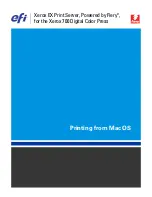
32
Keys:
Shows the VirtKeys menu, which allows you to simulate
pressing special keys such as the Windows key or complex multi-key
sequences.
Disk:
Shows the USB emulated disk menu.
In/Ej:
Insert or eject the emulated USB disk. Enabled only if the host
recognizes the USB disk.
R/W:
Shows if the disk image is readable and/or writable. If the disk is
readable, the R letter will be white. Whenever the host reads from the
disk, the R letter will glow green for a few seconds. Whenever the host
is writing to the disk, the W letter will glow for a few seconds.
8M:
The type of USB disk selected is indicated here. The letters Flpy
indicate floppy disk and CD indicates emulated CD-ROM.
PS/2:
This area will show either PS/2 (as in this example) or USB
to indicate if keyboard and mouse are being emulated via USB
connection or PS/2 signals. If Autosync appears beneath this indicator,
the mouse pointers on the local mouse and the VNC session will be
synchronized automatically.
[1][A][S]:
These flags show the state of the keyboard lights, NumLock,
ShiftLock and ScrollLock respectively.
X:
Click this button to close the Bribar and hide it. This can be very
useful on a client machine that has a screen size the same as the
remote machine. No vertical screen space is wasted with the Bribar.
Use double-F7 to start the main menu, then click on the Bribar to
restore the feature.
Other items:
If the server’s screen is larger than 1024x768, additional
buttons will be shown to the right of the above listed items. These are
all keyboard shortcuts and are duplicated in the Keys menu.
















































